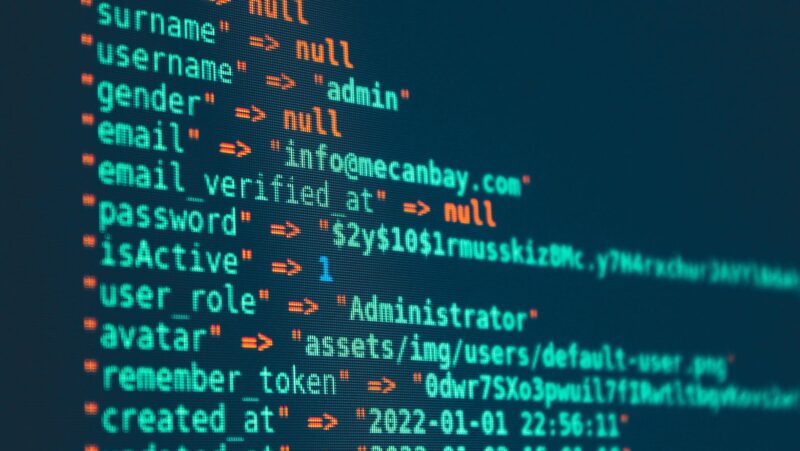
Introduction
In the fast-paced, digitally-driven world we inhabit, the exchange of information has become seamless. From online transactions to social media interactions, our lives are intricately woven into the fabric of the interconnected web. Yet, with this convenience comes the responsibility to protect our digital selves. Enter the realm of Personally Identifiable Information (PII) – the digital keys that unlock the doors to our identities. In this article, we’ll delve into why privacy matters and equip you with expert insights to safeguard your Personally Identifiable Information data.
Understanding Personally Identifiable Information (PII)
Personally Identifiable Information, or PII- what is pii data? It refers to any information that can be used to identify an individual. From the mundane to the deeply personal, PII encompasses a vast array of data points that collectively paint a picture of who we are. In the digital landscape, where data is the currency of the realm, safeguarding PII is paramount.
Examples of PII:
Full Name: The cornerstone of personal identification.
Address: Residential or business locations that reveal our whereabouts.
Phone Numbers: Contact details providing a direct link to individuals.
Email Addresses: Digital addresses are crucial for communication.
Social Security Number (SSN): A unique identifier with significant implications.
Financial Information: Bank account details, credit card numbers, and transactions.
Biometric Data: Fingerprints, retina scans, and other unique physical traits.
Date of Birth: An identifier often used for verification purposes.
Driver’s License Number: Government-issued identification for many.
Online Account Credentials: Usernames and passwords granting access to digital realms.
The Importance of Safeguarding PII
Preserving Individual Privacy: A Basic Right
Privacy is not a luxury; it’s a fundamental right that forms the bedrock of individual autonomy. Safeguarding PII is not just about protecting data; it’s about preserving the essence of who we are. In an era where information is exchanged at the speed of light, IT services maintaining privacy becomes a critical aspect of our digital citizenship.
Mitigating Identity Theft: A Pervasive Threat
Identity theft is a looming threat in our interconnected world. Misuse of PII can lead to unauthorized access to accounts, financial fraud, and even identity impersonation. By understanding the significance of the information we share, we empower ourselves to proactively mitigate the risks associated with identity theft.
Mitigating Identity Theft: Expert Insights
Vigilance in Online Interactions
Being vigilant in your online interactions is the first line of defense against identity theft.

Avoid clicking on suspicious links, be cautious when sharing PII online, and regularly review your financial statements for any unauthorized transactions. Awareness is key to staying one step ahead of potential threats.
Robust Password Practices
The strength of your passwords is crucial in preventing unauthorized access to your accounts. Use complex passwords, a combination of letters, numbers, and symbols, and avoid using easily guessable information such as birthdays or names. Regularly update your passwords and consider using a reputable password manager for added security.
Multi-Factor Authentication (MFA)
Implementing multi-factor authentication adds an extra layer of security to your accounts. MFA requires users to verify their identity through multiple methods, such as a password and a one-time code sent to a mobile device. This additional step makes it significantly more challenging for unauthorized individuals to gain access.
Regularly Monitor Your Credit
Regularly monitoring your credit reports allows you to detect any suspicious activity promptly. Check for unfamiliar accounts, addresses, or transactions. Many credit bureaus offer free credit reports annually, and taking advantage of this service is a proactive measure in mitigating identity theft.
Secure Your Devices and Networks
Ensuring the security of your devices and home networks is essential. Keep your software and antivirus programs updated, use secure Wi-Fi connections, and consider implementing firewalls to create a digital fortress that safeguards your PII from potential threats.
Fostering Trust in Digital Interactions
Trust is the currency of the digital age. Whether engaging in e-commerce, social networking, or any online activity, users must trust that their PII is handled responsibly. Organizations that prioritize PII protection not only comply with regulations but also build trust with their user base, fostering a secure and reliable digital environment.
Safeguarding PII: Expert Insights
Encrypting Sensitive Data: Building a Digital Fortress
Encryption serves as a robust shield against unauthorized access.

By converting PII into unreadable code that requires a decryption key, even if intercepted, the data remains secure. Encryption is especially crucial when transmitting or storing sensitive information.
Implementing Multi-Factor Authentication: Strengthening Access Controls
Relying solely on passwords is a thing of the past. Multi-factor authentication adds an extra layer of security by requiring users to verify their identity through multiple means. Whether it’s a fingerprint scan, a code sent to a mobile device, or facial recognition, multi-factor authentication enhances access controls.
Regularly Updating Privacy Policies: Reflecting Evolving Standards
Privacy policies are not static documents; they should evolve with the changing landscape of digital privacy. Organizations handling PII must commit to regular updates, reflecting changes in regulations, technology, and user expectations. Clear and transparent privacy policies build trust with users, assuring them that their information is handled responsibly.
Educating Employees: Creating a Culture of Privacy
Employees play a crucial role in PII protection. Training and educating staff about the importance of privacy, the risks associated with mishandling sensitive information, and the best practices for safeguarding PII create a culture where privacy is a top priority.
Conducting Regular Security Audits: Identifying and Addressing Vulnerabilities
The digital landscape is dynamic, and so are the tactics of those seeking to exploit it. Regular security audits help organizations identify vulnerabilities in their systems and processes. By proactively addressing potential weaknesses, organizations can stay ahead of potential threats to PII.
Conclusion: Empowering Digital Citizens
As we navigate the digital highways of our interconnected world, the responsibility to safeguard Personally Identifiable Information rests on both individuals and organizations. Understanding the significance of PII, recognizing the potential risks, and implementing expert strategies for protection empowers us to take control of our digital lives.
Privacy matters – not just as an abstract concept but as a tangible and essential aspect of our online interactions. By unlocking the secrets of PII protection, we not only preserve our individual identities but also contribute to a digital landscape built on trust, security, and respect for the fundamental right to privacy.
As you embark on this journey to safeguard your PII, let this guide be your companion, offering insights, strategies, and a roadmap to navigate the intricate landscape of privacy in our interconnected world. Your PII is not just data; it’s a reflection of you. Let’s ensure it’s treated with the care and respect it deserves in the digital age.










